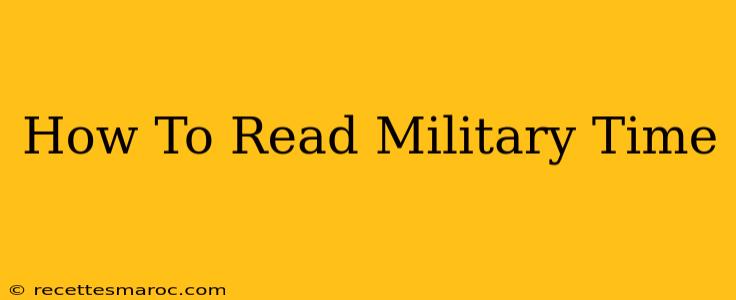Are you confused by military time? Don't worry, you're not alone! Many people find the 24-hour clock system used in military time a bit intimidating at first. But once you understand the basics, it's surprisingly straightforward. This guide will break down everything you need to know about how to read military time, making it easy for you to navigate schedules, understand time zones, and impress your friends with your newfound knowledge.
Understanding the Basics of Military Time
Military time, also known as the 24-hour clock, is a timekeeping system used worldwide by militaries, and many others, and is a simpler system once you get the hang of it. Instead of using AM and PM, military time uses a single 24-hour cycle. This eliminates any ambiguity about whether a time refers to the morning or afternoon.
Key Difference: The biggest difference between standard time (12-hour clock) and military time (24-hour clock) is the way the hours are represented. In the 12-hour clock, times from midnight to noon are denoted as AM (ante meridiem), and times from noon to midnight are denoted as PM (post meridiem). The 24-hour clock, however, simply counts from 0000 to 2359.
Converting Standard Time to Military Time
Here's the simple trick:
- For times from 1:00 AM to 11:59 AM: Simply add a "0" before the hour. For example, 1:00 AM becomes 0100, and 11:00 AM becomes 1100.
- For times from 12:00 PM to 12:59 PM: 12 PM remains 1200.
- For times from 1:00 PM to 11:59 PM: Add 12 to the hour. For example, 1:00 PM becomes 1300, 2:00 PM becomes 1400, and so on, until 11:00 PM becomes 2300.
- Midnight (12:00 AM): Represented as 0000.
Examples:
- 8:00 AM = 0800
- 11:30 AM = 1130
- 12:00 PM = 1200
- 3:15 PM = 1515
- 6:45 PM = 1845
- 11:59 PM = 2359
Converting Military Time to Standard Time
To convert from military time to standard time:
- For times 0000 to 1159: This directly translates to AM. Simply remove the leading zero if present. For example, 0800 becomes 8:00 AM.
- For times 1200 to 2359: Subtract 12 from the hour (unless the hour is 1200, which remains 12:00 PM). This translates to PM. For example, 1400 becomes 2:00 PM (14 - 12 = 2), and 2300 becomes 11:00 PM (23 -12 = 11).
Examples:
- 0900 = 9:00 AM
- 1130 = 11:30 AM
- 1200 = 12:00 PM
- 1515 = 3:15 PM
- 1845 = 6:45 PM
- 2359 = 11:59 PM
Why Use Military Time?
Military time offers several advantages:
- Clarity and Precision: Eliminates AM/PM confusion, making scheduling and communication clearer, especially in professional settings like aviation and healthcare.
- International Standardization: It's widely used internationally, facilitating seamless communication across time zones and cultures.
- Programming and Data Management: Simplifies data entry and processing in computer systems.
Practice Makes Perfect!
The best way to master military time is through practice. Start by converting a few times back and forth between standard and military time. With a little practice, you'll be reading and understanding military time like a pro in no time! You might even find it easier and more efficient than the standard 12-hour clock!

